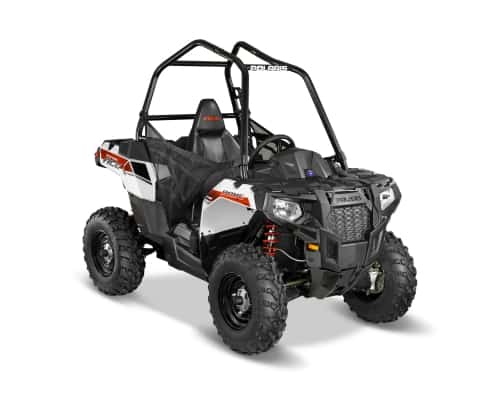 Safety First, is a dig at the absurdity of some of the training and concepts behind occupational health and safety (OHS) and is showing as part of the Melbourne International Comedy Festival. The comedy does not ridicule OHS as a concept but focuses on the idiotic, semi-informed trainers who talk about safety whilst also, often, talking shit. The humour is effective and occasionally generates discomfort for its proximity to reality. Continue reading “OHS needs more comedies like Safety First”
Safety First, is a dig at the absurdity of some of the training and concepts behind occupational health and safety (OHS) and is showing as part of the Melbourne International Comedy Festival. The comedy does not ridicule OHS as a concept but focuses on the idiotic, semi-informed trainers who talk about safety whilst also, often, talking shit. The humour is effective and occasionally generates discomfort for its proximity to reality. Continue reading “OHS needs more comedies like Safety First”
Category: Duty of Care
Coroner calls for fresh approach to OHS in small business
Ever since the UK Government reduced the occupational health and safety (OHS) obligations on small business, there have been concerns that a similar strategy could occur in Australia. Of all the States in Australia, Victoria is the most likely to mirror the UK actions, particularly as its WorkSafe organisation continues with its restructuring and (ridiculous) rebranding, and Victoria’s conservative government continues to see OHS as a red tape issue for small business. However a recent finding by the Queensland Coroner should be considered very seriously when thinking of OHS in small business.
In 2011 Adam Douglas Forster
” … came close to the rotating ball mill, then accidently (sic) became ensnared by the protruding bolts and was dragged underneath the ball mill which continued to rotate, thereby causing his fatal injuries.”
The inquest found
“There were no guards, barriers or other apparatus restricting access by any persons to the ball mill.” and
Forster “did not know how to turn the ball mill on or off”. Continue reading “Coroner calls for fresh approach to OHS in small business”
The safety features of the new Polaris set a new benchmark
 The Weekly Times scored an exclusive this week about a new model of Polaris quad bike which incorporates a roll cage or rollover protection structure (ROPS) in its design. The significance of the Sportsman Ace is, according to the newspaper and the manufacturer, a “game changer” because it seems to counter the arguments of the quad bike manufacturers against such design changes in submissions to government and in public campaigns. They have stressed that more effective control of a quad bike comes from driver training and behaviour and that ROPs may itself contribute to driver injuries and deaths. The Polaris Sportsman Ace, to be released in the United States this week and Australia next month, seems to prove that quad bikes can be redesigned to include safety features, an action that manufacturers have been extremely reluctant to do.
The Weekly Times scored an exclusive this week about a new model of Polaris quad bike which incorporates a roll cage or rollover protection structure (ROPS) in its design. The significance of the Sportsman Ace is, according to the newspaper and the manufacturer, a “game changer” because it seems to counter the arguments of the quad bike manufacturers against such design changes in submissions to government and in public campaigns. They have stressed that more effective control of a quad bike comes from driver training and behaviour and that ROPs may itself contribute to driver injuries and deaths. The Polaris Sportsman Ace, to be released in the United States this week and Australia next month, seems to prove that quad bikes can be redesigned to include safety features, an action that manufacturers have been extremely reluctant to do.
A major critic of ROPs on quad bikes in Australia has been the Federal Chamber of Automotive Industries (FCAI). SafetyAtWorkBlog spoke to a spokesman for the FCAI who explained that the Polaris Sportsman Ace is not an All-Terrain Vehicle (ATV) but a UTV (Utility Terrain Vehicle). Continue reading “The safety features of the new Polaris set a new benchmark”
Incident investigation findings should be shared
 Many people, and OHS professionals, complain about the lack of research in Australia into occupational health and safety issues. Research is occurring but often this is inaccessible to companies, professionals and decision-makers due to unjustifiable costs for the articles and journals. Yet there is OHS research, of a type, that can be done by any company should they choose to do so – incident investigation.
Many people, and OHS professionals, complain about the lack of research in Australia into occupational health and safety issues. Research is occurring but often this is inaccessible to companies, professionals and decision-makers due to unjustifiable costs for the articles and journals. Yet there is OHS research, of a type, that can be done by any company should they choose to do so – incident investigation.
Individual investigation reports may only address one set of circumstances, those that led to an incident or, rarely but importantly, a near miss or a systems breach, but together these reports may identify a systemic problem or illustrate broader safer deficiencies in an industry sector.
Prediction on accountability and a political kick in the balls
 There will be two areas of occupational health and safety attention in the early months of 2014 in Australia – workplace bullying laws and the Royal Commission into Home Insulation Program. The labour law firms are gearing up for a “bumper year” as one said prior to Christmas and the business groups are already lobbying/complaining/whingeing about the workplace bullying laws administered by the Fair Work Commission. However the Royal Commission has the potential for the biggest social and ideological impact so, as the new year begins, I will attempt some predictions of the Royal Commission’s findings based around some of the terms of reference.
There will be two areas of occupational health and safety attention in the early months of 2014 in Australia – workplace bullying laws and the Royal Commission into Home Insulation Program. The labour law firms are gearing up for a “bumper year” as one said prior to Christmas and the business groups are already lobbying/complaining/whingeing about the workplace bullying laws administered by the Fair Work Commission. However the Royal Commission has the potential for the biggest social and ideological impact so, as the new year begins, I will attempt some predictions of the Royal Commission’s findings based around some of the terms of reference.
Substantial Change
‘the processes by which the Australian Government made decisions about the establishment and implementation of the Program, and the bases of those decisions, including how workplace health and safety and other risks relating to the Program were identified, assessed and managed;’
This paragraph is the one that could have the most long-term effect on governance, due diligence and procurement. There are many suggestions on these issues in the sphere of project management but trying to keep the discussion in OHS, there are some useful comments on the Government procurement of services. Australia’s Federal Safety Commission acknowledges that procurement is an important stage in project design. WorkSafe Victoria’s “handbook for the public sector – health and safety in construction procurement” says
“As procurers, governments can promote better health and safety by requiring projects to include a range of safety measures, such as specifying the safety budget, building layout or the use of certain
Sex, work, liability and safety
There is a constant tension between occupational health and safety (OHS) and workers compensation. OHS is intended to prevent harm and workers compensation is available for when harm cannot be, or has not been, prevented. In Australia, these two elements of safety are administered by different organisations under different legislation but it is a distinction that baffles many. The recent discussion about a sex-related workers compensation claim illustrates this bafflement to some degree.
This time last year Comcare filed an appeal over a Federal Court decision regarding
“A Commonwealth employee is seeking workers’ compensation for injuries sustained after a light fitting was pulled from the wall of a motel during sex, on a business trip.”
(A good summary of most of the legal proceedings is provided by Herbert Geer.)
The case has received wide media attention mostly for the salacious matter of the case, and some political attention, but the purpose of the appeal, according to Comcare, was
“… to seek a High Court ruling on the boundaries between private
Continue reading “Sex, work, liability and safety”
Working at Heights seminar video available
In early September 2013 I was invited to participate in a panel discussion on the issue of working at heights. The “crisis summit” was reported on recently by Marian Macdonald. The videos of this panel are now available through the WAHA YouTube channel and all the separate videos are worth viewing. The video in which I first advocate for a focus on safety is embedded below.
The questions from the floor are included in the last video of the panel discussion. If the issue of working at heights seems dry it is worth looking at the video from the 4.30 minute mark. Several members of the audience take the Workcover NSW representative to task.
